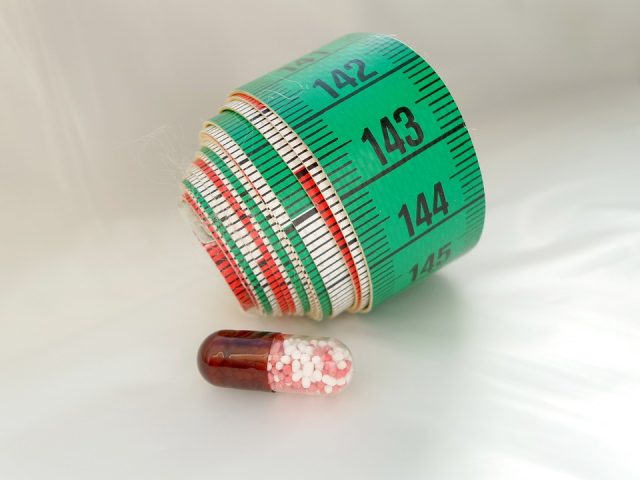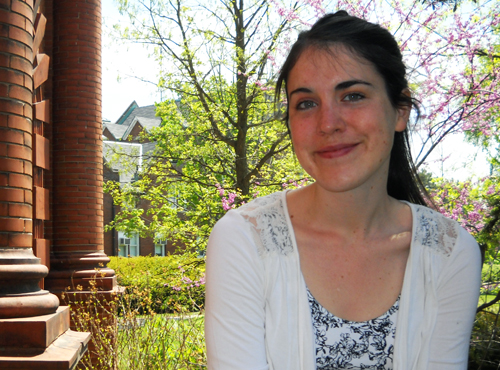Editor’s Note: This article originally appeared in The Conversation Canada and was picked up by the National Post.
 When you picture someone with an eating disorder, who do you picture?
When you picture someone with an eating disorder, who do you picture?
As a researcher and PhD candidate in family relations and human development, I have asked this question of audiences ranging from high school students to community groups to tenured professors, and the answer remains largely the same: A thin, young, white, privileged, heterosexual, cisgender woman.
Despite accumulating evidence that eating disorders can impact anyone, eating disorders continue to be presented — in the media, in public discourse, in doctors’ offices and even in much of the research literature — in stereotypical ways.
These stereotypes can lead to the under-recognition and under-diagnosis of eating disorders in other populations and lack of treatment.
This week is Eating Disorder Awareness Week in Canada, with a theme of “One size does NOT fit all,” to emphasize the diversity of people who suffer from eating disorders. The #7BillionSizes campaign led by the National Eating Disorder Information Centre (NEDIC), asks for large-scale change in the conversations we have about eating disorders.
Such social media campaigns can help to reduce the significant shame and stigma associated with experiencing a mental illness, particularly one so often framed as “a thin white woman’s disease.”
But how do people with eating disorders represent themselves on social media? Do online communities provide valuable space for supportive community, or do they reinforce the stereotypes of our wider discourse?
Marginalized bodies in a slimming world
Much of my research has focused on representations of eating disorders, and the impact they have on those attempting to recover.
People in recovery often struggle to find their footing in a world that is fixated on slimming. Often, they engage in eating and exercise patterns that feel profoundly “countercultural” — eating a piece of cake for therapeutic reasons may sound amazing to someone without an eating disorder, but can be incredibly difficult for someone in recovery, particularly when they are not visibly ill.
People in large bodies, people of colour, people of different genders, people with disabilities and others who are socially marginalized do not often find themselves in the picture of “the person with the eating disorder,” let alone “the recovered person.”
They often face double or triple stigma, living in bodies that are not made welcome in a society with narrow standards. Their bodies are subject to increased scrutiny, which can compound the challenges of recovery.
Even in the clinical and research communities, we still lack a consensus definition of what eating disorder recovery actually means. And while many studies speak to the possibility of recovery, research also shows that many individuals have a hard time imagining their own recoveries.
Individuals may feel reduced to their eating disorders — forever marked, in the eyes of the public and health professionals, by distressing relationships with food.
Recovering on Instagram
Seeking alternatives, people often express their own recoveries on social media. By establishing recovery communities online, they may find a space that does not exist elsewhere — a community to support the process of acting countercultural.
But do these communities simply serve as another metric against which people must measure themselves? How diverse are the bodies, and recoveries, represented in social media?
My adviser, Dr. Carla Rice, and I undertook an analysis of 1,056 images of “eating disorder recovery” on Instagram.
We found that people using Instagram to document their recovery processes did appear to be engaging in community-building on the social media platform.
However, the kinds of recovery represented retained the stereotypical trappings of the experience of eating disorders.
Most posts continued to feature thin, young, white women. Further, they frequently featured stylized versions of food, reflecting a certain class status and engagement with “foodie” cultures, as well as focusing on food in eating disorders, which are about more than food.
Neither too thin nor too fat
Studies have identified how “healthy eating” curricula in schools can increase the incidence of eating disorders.
Our analysis revealed how easily health can become entangled with particular ways of eating. Often, hashtags like “#EatingDisorderRecovery” were used alongside “#CleanEating” and “#HealthyFood.”
This coincidence of hashtags within the eating disorder recovery context raises questions about the challenge of navigating that place between healthy and ill — and the kinds of bodies we imagine existing in these places.
We cannot ignore how health is often judged based on how a person appears. In our society, health is often equated with thinness in a way that can lead to significant discrimination against people in large bodies and worse health outcomes for those individuals.
People with eating disorders negotiate their recoveries in a world that values restrained eating. It is not surprising, then, that their hashtags reflect a wider societal confusion about how to be healthy, and what health “looks like.”
Those in recovery are also faced with the challenge of “proving” their recoveries by enacting a body that is neither too thin nor too fat.
In our study, we saw replication of stereotypes about whose bodies are considered eating-disordered and recovered. Only one image of a non-feminine-performing body was present.
Most users appeared to be white and thin (but not emaciated). Many of the messages conveyed in captions centred around appealing to the male gaze, gesturing at heterosexuality.
Challenging perfection, with real-life impact

Could these representations of recovery serve to reinforce a particular kind of recovery? While the overall picture of recovery in these images was quite narrow, we hesitate to condemn the Instagram community as unhelpful to those in recovery.
Some users did engage with Instagram as a way of challenging the perfection and self-management demanded of all of us, particularly when it comes to health.
They used hashtags in unexpected ways, for instance tagging a photo of a dessert “#HealthyEating.” They commented on others’ posts, offering reassurance and community to others working to live recovered lives.
However, in order for such communities to be truly transformational — to challenge the stereotypical representations of eating disorders and recovery — they would need to present a wider range of bodies and practices.
They would need to integrate the #7BillionSizes of people with eating disorders and in recovery, and recognize that #OneSizeDoesntFitAll.
In the meantime, we can take inspiration from those working to challenge representations of eating disorders: Trans Folx Fighting Eating Disorders, Nalgona Positivity Pride and others working in the social justice space offer a blueprint.
![]() This work has real-life impacts — opening up access to treatment, creating appropriate treatment where it does not exist, and generally making life easier for the some half a million Canadians who struggle with eating disorders.
This work has real-life impacts — opening up access to treatment, creating appropriate treatment where it does not exist, and generally making life easier for the some half a million Canadians who struggle with eating disorders.
